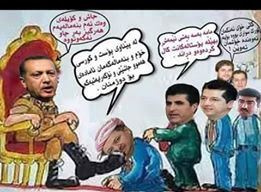Iran Has Started Producing Uranium Metal, in Violation of 2015 Accords, IAEA Says
The material can be used to form the core of nuclear weapons; Iran says it is producing it for research purposes
The U.N. atomic agency said Iran had produced a small amount of uranium metal at its Isfahan nuclear facility, seen here in 2007.
PHOTO: VAHID SALEMI/ASSOCIATED PRESS
By
Laurence Norman
Updated Feb. 10, 2021 7:33 pm ET
Iran has produced a material that is banned under the 2015 nuclear accords and could be used to form the core of a nuclear weapon, as it seeks to step up pressure on the Biden administration to lift economic sanctions on Tehran.
A confidential report by the United Nations atomic agency, seen by The Wall Street Journal, said Iran had started producing uranium metal on Feb. 6 at a nuclear facility in Isfahan that is under the agency’s inspection.
The material produced was a small amount of natural uranium metal, the International Atomic Energy Agency reported, meaning it wasn’t enriched. To use uranium metal for a nuclear weapon’s core, Iran would need around half a kilogram, or slightly more than one pound, of highly enriched uranium metal, experts say..
A January 2020 satellite image of Iran’s Fordow Fuel Enrichment Plant.AGENCE FRANCE-PRESSE/GETTY IMAGES
Iran’s latest breach is expected to further stoke tensions over Iran’s nuclear activities as the Biden administration looks to resume diplomacy aimed at returning to the accord.
Robert Einhorn, a former senior State Department official on proliferation issues, saw the Iranian move as an attempt to ratchet up the pressure on the Biden administration.
ADVERTISEMENT
“Although it’s only a small amount of natural uranium, the Iranians know that any production of uranium metal would rub against a raw nerve in Washington,” Mr. Einhorn said. “They seem to have decided to elevate the stakes in an effort to force the Biden administration to make a conciliatory move. It may mean that they are now prepared to cross what many have seen as a red line—reducing IAEA monitoring activities.”
Even if the Biden administration is successful in encouraging Iran to resume abiding by the 2015 agreement, more formidable challenges loom. Washington wants to use that deal as a stepping stone toward a follow-on accord that would prolong constraints on Tehran’s nuclear program and cover Iran’s ballistic missile program as well
Iran has warned it will start to restrict the access of IAEA inspectors in the country on Feb. 21 unless the U.S. moves to lift sweeping sanctions imposed on Tehran after former President Donald Trump pulled the U.S. out of the nuclear deal in May 2018. That would partially reverse one of the most important restraints on Iran’s activities built into the nuclear deal.
European officials have been trying to explore ways to persuade Iran to delay that step and have been seeking a gesture from Washington that could persuade Tehran to back off, according to diplomats. However, people briefed on the talks say it looks increasingly unlikely that Washington will make any quick move that would persuade Iran to push back its deadline.
Iran’s latest breach is expected to further stoke tensions over Iran’s nuclear activities as the Biden administration looks to resume diplomacy aimed at returning to the accord.
Robert Einhorn, a former senior State Department official on proliferation issues, saw the Iranian move as an attempt to ratchet up the pressure on the Biden administration.
ADVERTISEMENT
“Although it’s only a small amount of natural uranium, the Iranians know that any production of uranium metal would rub against a raw nerve in Washington,” Mr. Einhorn said. “They seem to have decided to elevate the stakes in an effort to force the Biden administration to make a conciliatory move. It may mean that they are now prepared to cross what many have seen as a red line—reducing IAEA monitoring activities.”
Even if the Biden administration is successful in encouraging Iran to resume abiding by the 2015 agreement, more formidable challenges loom. Washington wants to use that deal as a stepping stone toward a follow-on accord that would prolong constraints on Tehran’s nuclear program and cover Iran’s ballistic missile program as well
Iran has warned it will start to restrict the access of IAEA inspectors in the country on Feb. 21 unless the U.S. moves to lift sweeping sanctions imposed on Tehran after former President Donald Trump pulled the U.S. out of the nuclear deal in May 2018. That would partially reverse one of the most important restraints on Iran’s activities built into the nuclear deal.
European officials have been trying to explore ways to persuade Iran to delay that step and have been seeking a gesture from Washington that could persuade Tehran to back off, according to diplomats. However, people briefed on the talks say it looks increasingly unlikely that Washington will make any quick move that would persuade Iran to push back its deadline.
























.jpg)


















































.jpg)






Inga kommentarer:
Skicka en kommentar